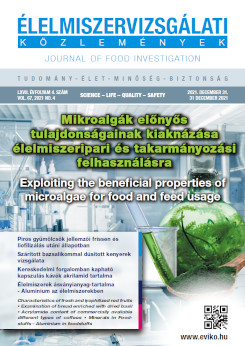Minerals in Foodstuffs Aluminium in foodstuffs
Main Article Content
Absztrakt
The paper deals with questions of aluminium, which concentration can be significant in plants, although it is not an essential element. The concentration of aluminium of tea leaves is extremely high. The concentration of aluminium of plants strongly depends on the pH-value of the soil, if the level of acidity in the soil is high, the Al-content of the soilsolution is also high, causing P-deficiency for plants. The intake of aluminium of the humans is a function of the ratio of consumption of plant and animal origin foodstuffs. The aluminium content of animal origin foodstuffs – because of low level absorption rate of aluminium is rather low – so the concentration range of milk of aluminium is low. After the macroelements the aluminium is the metallic micro element which it’s daily intake generally the highest in the human diet, approximately between 30 and 50 mg. The too high aluminium uptake in the diet can produce various healthy disorders in the human body, and probably there is a connection between Al-intake and Alzheimerdisease and the old age dementia, as well (The association between aluminium uptake and Alzheimer’s disease is disputed by several sources in the literature; the Editor).

